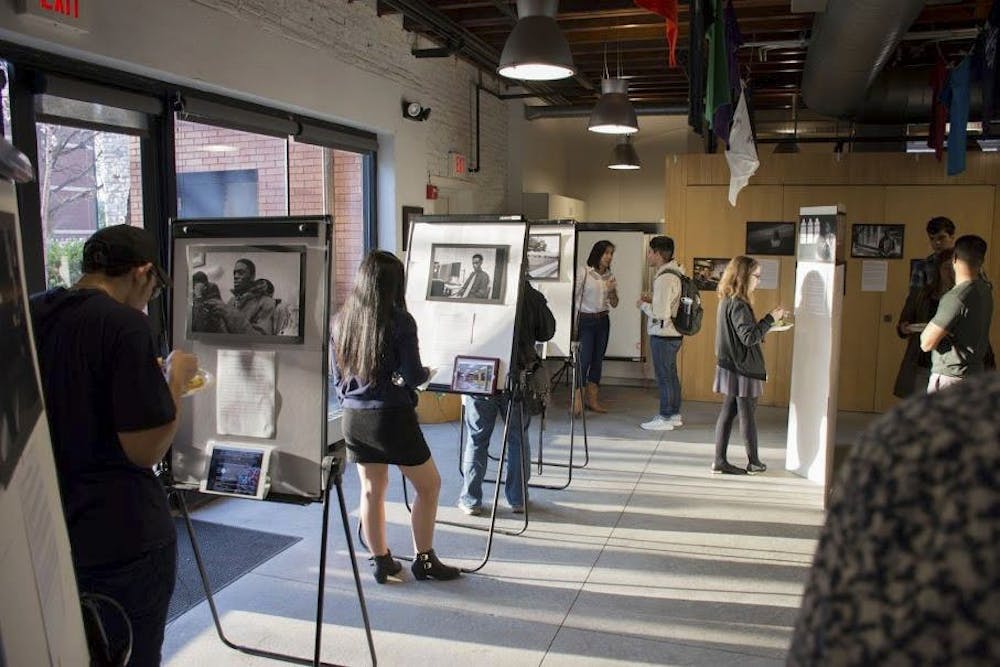Photos and interviews on gentrification, gun control and class divisions in Philadelphia were on display at the LGBT center last Friday.
The multimedia photojournalism gallery marked the second annual exhibition organized by 'Where's the Love, Philadelphia?' — a community research project founded and based in Penn.
Founded in 2014, WTL is a "storytelling project" that "seeks to raise awareness of the gun violence epidemic in Philadelphia by sharing the stories of those affected," according to their website.
The gallery featured the portraits, partial transcripts and audio recordings from seven Philadelphia residents affected by gun violence, including one of Wharton freshman and northeast-Philadelphia-native Keith Bolden.
WTL co-founder and College senior Tia Yang said it was a deliberate choice to base the exhibition around these stories.
“We thought the best way to broadcast the things we were learning with the people who were effected by gun violence was just to publicize their stories and have them speak for themselves,” Yang said. “Even people from Philly—everyone can learn from this because gun violence is such a big problem here.”
In his interview with WTL, Bolden noted that Penn is a “rich university in a poor city," adding that the University isolated from the greater city of Philadelphia.
“The people here at Penn don't know nothing about Philly. They don't have no idea, they're just like, ‘Oh it's dangerous.’ Because Penn isn't West Philly,” Bolden said in his WTL interview.
“The way they built the University, and the way they built the borders of the University, it's a clear distinction once you cross a certain block that this is Penn’s campus and this is West Philly.”
Other narratives featured at the gallery included those of former convicts, West Philadelphia high school students and the founder of Black Guns Matter — an organization whose mission is to "educate urban communities on their second amendment rights and responsibilities through firearm training and education."
Yang said WTL does not intend on using these narratives to make a political statement on gun control. The organization does not want to make partisan suggestions, but to strengthen communication among Philadelphia residents, she added.
WTL has been interviewing and photographing Philadelphians affected by gun violence since fall 2014. Their main platform for sharing narratives is their website.
College senior Alexander Atienza who contributed photos to the gallery said there is power in combining photography and research to connect Penn students to life in Philadelphia outside of the University City bubble.
“In subtle ways art can be used for social good," Atienza said.









